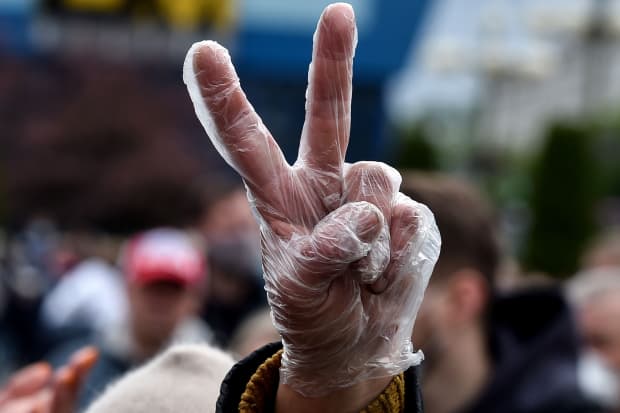This post was originally published on this site

Agence France-Presse/Getty Images
The U.S. economy took a remarkable bounce these past few months but to accomplish a V-shaped recovery, Congress and the administration must agree on another stimulus package soon.
History indicates the economy does not have to suffer enduring damage from a pandemic. The Spanish flu was followed by the roaring 20s, and the 1957 flu bore few lasting effects.
Past pandemics forced temporary closures of schools and some businesses in many cities. However, these days, Americans are much more affluent than in the 1920s and 1950s, when smaller farms and factory jobs dominated employment, incomes and access to credit were thinner, and banks more vulnerable. For COVID-19, we could better afford shutdowns that took a quarter of the economy offline to save more lives.
Hitting the emergency break left a huge hole—unemployment jumped from 3.5% in February to 14.7% in April—wiping away all the jobs created by the Obama-Trump expansion.
Retail sales—which to an economist are like a patient’s pulse for a physician—were similarly depressed. Nearly half of all households lost income, and consumers could not get to stores, go to the gym or sit in a restaurant.
The sun always shines again.
In May and June, the economy added 7.5 million new jobs and in May retail sales rebounded strongly—those were down just 6.1% from a year earlier.
Even with the second wave of infections and new temporary restrictions, it is hard to see how the U.S. economy could be downsized once a vaccine is in place but the devil is in the details.
Abrupt events like the COVID-19 or the financial crisis tend to weed out weak businesses—like Hertz HTZ, and Neiman Marcus—that borrow excessively when the economy is expanding but don’t turn strong enough profits to sustain them during a downturn.
This time, public health policy limits recovery—the financial legacy of shutdowns and 50% capacity limits are making many small, public-facing businesses unviable. This repeats elsewhere in business services—for example, the absence of professional sports is contributing to a longer-term pullback in advertising spending.
Since the crisis began, about 1.6 million workers lost their jobs permanently, because spending patterns will be markedly different even after we have a vaccine and the masks are gone. Folks will Zoom ZM, +2.35% more and commute and fly less, eat more delivered meals and fewer in restaurants, and require less office space in city centers.
An extension of the federal supplement to state unemployment benefits, which ends July 31, is in order. At $600 per week, it has been widely assailed for paying furloughed employees more than they earned on the job. Simply doubling the average state benefit of $321 per week with federal funds makes sense.
Millennials and their younger siblings, who don’t have the same wealth in retirement accounts and home equity as their elders, took a terrible hit from job losses.
Even before COVID-19, the financial plight of younger Americans had pushed down U.S. birthrates to precipitously low levels with terrible long-term consequences for maintaining labor-force growth and quality.
Politicians on both sides like to talk about relief from higher education debt when campaigning for office but never get around to addressing it or the skyrocketing cost of college tuition. Just as the banks needed fresh capital and regulatory scrutiny after the financial crisis, it’s high time university finances were put under a congressional magnifying glass and regulated.
State and local governments have taken substantial hits to their income, sales and hospitality tax collections and been forced to furlough about 1.5 million jobs since the crisis began. Those finances are not going to improve enough and reverse job losses without federal aid. Instead, firings will multiply.
The governors have asked for $500 billion in temporary assistance—much less expensive than the $1 trillion proposed in the House Democrats’ new $3 trillion stimulus bill.
The federal highway funding law expires in September, and both congressional Democrats and the president have expressed interest in a broad infrastructure bill that would address issues such as 5G build out in rural areas and green investments.
This is a great time to resolve long festering issues like student debt and inadequate attention to the country’s aging roads, rails and technology. That would move folks from industries that have permanently contracted into new more productive activities.

